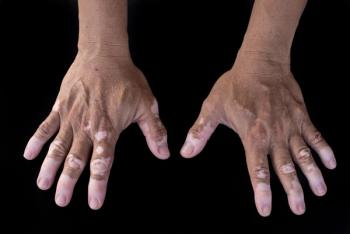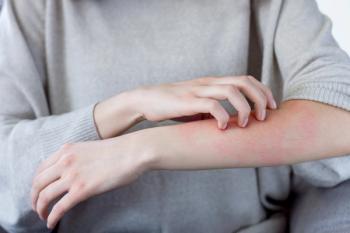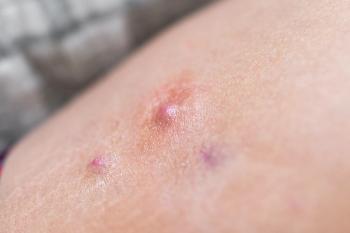
At-home Vitiligo Phototherapy Has More Patient Adherence Over Hospital-based Use
While phototherapy has been shown to have a positive effect on vitiligo as it works to reduce or prevent the destruction of skin cells, treatment done in the hospital can be long-term and require a number of visits.
It's been proven vitiligo, the autoimmune skin depigmentation condition, can be treated through hospital-based phototherapy, but recent studies show that self-treating, home-based therapy's adherence to treatment is significantly better.
While phototherapy has been shown to have a positive effect on vitiligo as it works to reduce or prevent the destruction of skin cells, treatment done in the hospital can be long-term and require a number of visits.
Self-treatment using home-based phototherapy can be a more convenient alternative, according to a review published in
Authors of the systematic review colleced data to assess the effectiveness and safety of home-based phototherapy for vitiligo. Research was conducted on Medline, Scopus and The Cochrane Library for randomised controlled trials (RCT).
Three studies were reviewed in this search: two compared home-based with institution-based phototherapy, and one compared home-based phototherapy with placebo. In total, there were 195 participants aging from 5 to 71 years with a clinical diagnosis of vitiligo.
Findings on effectiveness were contradictory across studies with variable rates of repigmentation. There ended up being no significant difference in repigmentation rates between the groups, ranging from <25% to >75% repigmentation of lesions, but adherence to treatment schedules resulted to stand out significantly better in home-based groups due to having any-time access.
In one of the studies, it was found that 68% of participants in the active phototherapy group and 64% of participants in the placebo group would use the hand-held home-based phototherapy device again and recommend it to others because self-administration allowed flexibility of treatment.
Between all three studies, 13% of participants in the institution-based groups discontinued treatment due to a lack of time or missing too many treatments, compared to 0% of the home-based groups, with one study accrediting this to the convenience of treatment.
An author of the review explained the convenience and adverse rates were significantly higher and more severe across home-based phototherapy due to "overenthusiastic use." However, overuse does not result in any significant benefit in repigmentation compared to institution-based phototherapy; the clinical benefit of greater adherence is unclear.
According to the review, home-based phototherapy may have a place in the treatment of vitiligo due to its convenience, particularly for individuals who are unwilling or unable to attend hospital regularly. However, it's suggested the effectiveness and safety of home-based phototherapy should be explored further in large-scale, good-quality RCTs, before being recommended for clinical practice use.
Newsletter
Get the latest industry news, event updates, and more from Managed healthcare Executive.




